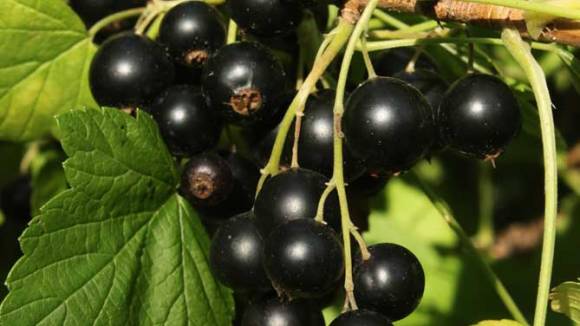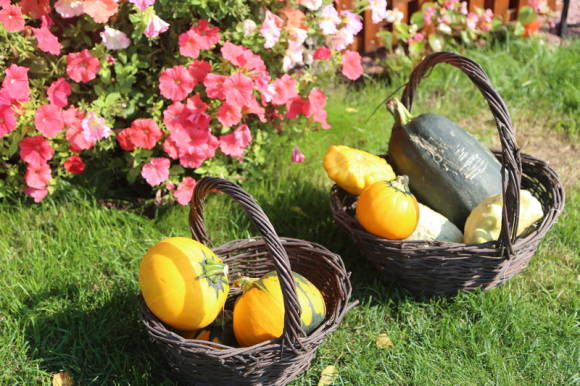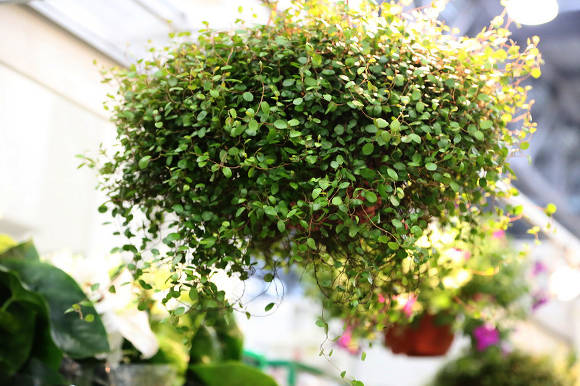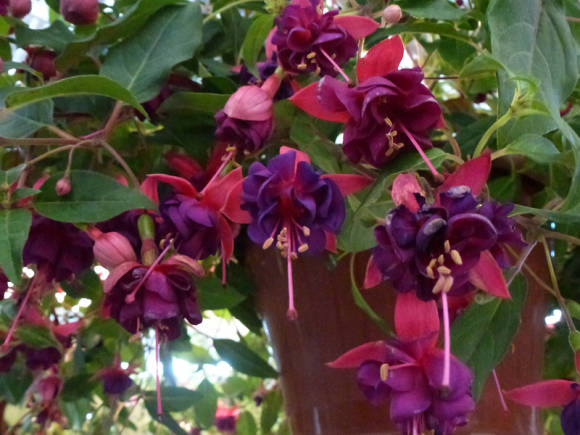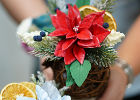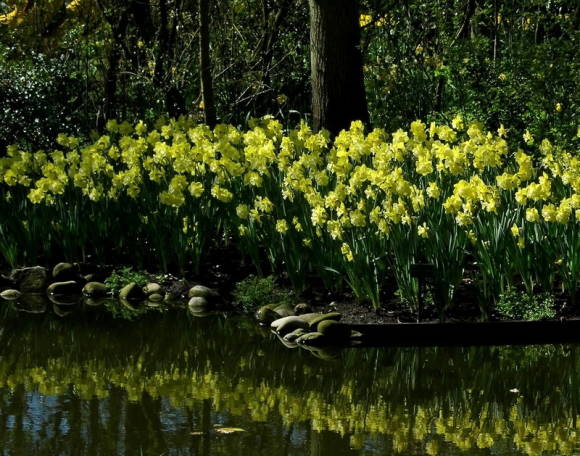 Narcissus is no longer an outlandish overseas flower. It is found in almost all gardens and is not difficult to grow as it has adapted well to our harsh climate. And although there are many varieties that bloom together or much later than most traditional tulip varieties, we still associate the arrival of early spring with delicate and fragrant daffodils. Daffodils belong to the amaryllis family. In nature, up to 60 of them are known, and in culture there are already several thousand varieties, but every year some interesting novelties appear.
Narcissus is no longer an outlandish overseas flower. It is found in almost all gardens and is not difficult to grow as it has adapted well to our harsh climate. And although there are many varieties that bloom together or much later than most traditional tulip varieties, we still associate the arrival of early spring with delicate and fragrant daffodils. Daffodils belong to the amaryllis family. In nature, up to 60 of them are known, and in culture there are already several thousand varieties, but every year some interesting novelties appear. The first in the gallery of new products is the Taurus cultivar, which belongs to the group of split-crown daffodils. Its large, split crown changes its color from bright yellow with a pink rim to almost completely pink within a few days! The snow-white Trepolo variety with a bright yellow-orange central star or Apple Pie, Apricot Whirl, Valdrome or Walz varieties can make good competition for it. The height of the Trepolo daffodil is medium, 30-40 cm, the rest - 40-45 cm. It is impossible not to mention the beautiful new Sunny Side Up variety - its chic corrugated lemon-yellow crown will not leave anyone indifferent! The variety blooms quite late, height 35-45 cm.
 |  |
Among the large-crowned daffodils, there is also a novelty - the Professor Einstein daffodil with a bright orange crown in the center of the flower. See how solemnly and gracefully he presents his beauty against the background of red imperial tulips, which only emphasize their aristocratic origin! Flowering quite early, height 35-40 cm. Or, for example, Pink Charm variety - pure white with a light creamy pink crown, which over time is gaining a brighter pink hue. Very good material for various floristic compositions and good resistance to bad weather. The height of the flower is slightly above average, 40-45 cm. Flowering usually occurs in the middle of the season. The Sentinel variety is also very beautiful in its own way, with a very large pink crown. The height of the peduncles is 35-40 cm, flowering is medium-late.

Or maybe you prefer the tubular Peaches and Cream, which also changes the color of the center from beige-pink to bright orange-pink? An excellent choice for curbs, rocky slides, and retaining walls. Next to it or against the background of violoka and muscari, the lime-lemon Snow Frills variety with an elegant white center or the white-yellow Salome variety will look quite stylish. Or, for example, a completely new variety, which does not yet even have a registered trade name and is shown at exhibitions under the name KV12. His crown is salmon pink against the background of a white central part and pale yellow petals. All varieties are stocky enough, only 25-35 cm high. This makes them good candidates for planting in rockeries, rock gardens or just separate groups on the lawn or on gentle slopes. Flowering is medium late.
Standing apart among the tubular daffodils is the chic, delicately lemon-lime large-flowered Pineapple Prince with a graceful white rim around the edge of the large central tube. Flowering later, it is quite tall, the height of the peduncles is 45-55 cm. Excellent cutting! There are other worthy new varieties, for example, Topolino, W.P. Milner, Wisley. They are a little smaller in stature, and their flowers are noticeably smaller, but look how gracefully they look in a flower bed or in a composition in a floor vase!
Among terry daffodils, there is simply a huge replenishment - this is a tall yellow variety Clear Day with an orange-pink double center, and a lemon-yellow Fashion Parade with a darker center, but lighter tips of the petals, and a large-flowered variety Acropolis. It is, so to speak, densely doubled and almost completely snow-white with a small orange "edge". And how beautiful is the peach-beige variety Angelica with an open orange center! A little apart is the shorter and perhaps not so large, but no less beautiful snow-white daffodil Gay Challenger.Which one is better, you choose, our dear reader. For me, they are all beautiful in their own way and will be very appropriate in various parts of your garden.

A special group is made up of daffodils with a double center. For example, the Wave variety has a very original flower shape. This is a novelty for the last two years. It has a beautiful and very strongly doubled center, consisting of bright yellow and white tightly folded inner petals. The Modern Art variety has the same or almost the same flower shape. It has been on our market for much longer, although it can also be attributed to the novelties of the XXI century. It has a very beautiful combination of lemon yellow petals and a dark orange center. Both varieties look very good when cut. I highly recommend it! The height in the open field is 35-45 cm, in the closed field it can be slightly higher. Flowering medium-late.
Among the novelties among cyclamen-shaped daffodils, I would like to mention the very graceful and elegant variety Cotinga with small white petals bent back and soft salmon centers, or, for example, the Sailboat variety with soft lemon centers. Like all daffodils of this group, these varieties bloom early enough and are short, only 15-25 cm in height. The low height and abundant early flowering make it possible to combine this variety with very early tulips, such as the Plaisir tulip.
I would like to say a few words about a very beautiful, but rarely widespread or simply unknown variety of Irene Copeland. It belongs to terry varieties and is no longer a novelty. But look how amazingly elegant it looks on a regular footpath near the office! And imagine how these daffodils will bloom at your edge or along the entire perimeter of your site!
 |  |
There are novelties in the camp of poetic daffodils. Recently, a beautiful large-flowered variety Margaret Mitchell has appeared on the market in its own way, with a very beautiful lemon-yellow center and delicate red edging. It will look great both on the plot and in the cut! Its height is 40-45 cm, flowering later.
For lovers of multi-flowered daffodils, I can recommend the rich yellow Martinette with a bright orange center. The number of flowers on its peduncle can vary from 3 to 5. The height of the peduncle is highly dependent on the light and the planting site and can reach 35-60 cm. Flowering in the middle of the season. The daffodil Ziva has even more flowers on one peduncle. Its pale white caps on rather high, 40-45 cm, peduncles can have more than ten beautiful flowers! It blooms quite late, so it can be combined with many medium and late flowering tulip varieties.

The use of daffodils is very versatile - from planting in regular park beds to growing on alpine slides, mixborders and patio containers. And how beautiful they look in the cut! Daffodils will look very stylish in large floor vases near your house or cafe, and in ordinary neat pots or pots near your gazebo. It is perfectly acceptable to just plant them under a tree or along the foundation of your garden house, steps or hedges. They will look appropriate in large flat floor vases on pedestrian alleys and near artificial reservoirs.
Can you imagine a whole blue river of blue Armenian muscari (Muscari armenicum) with shores of bright yellow or white daffodils Peeping Tom? Moreover, this "river" appears completely unexpectedly and just as unexpectedly disappears after 2-3 weeks. Compare the two below photos. They are taken at intervals of only 8 days. And in a couple of days, bright Rob Verlinden tulips will bloom in the same place and this colorful show will last at least 8-10 days!

This idea can be used with other, later varieties. For example, the yellow daffodils of the Quail variety and the later Muscari variety Bicolor will work well. And finally, can these varieties be evenly mixed? and then your show will run for over a month! In subsequent years, this effect will only intensify,since these crops do not need to be disturbed for several years and they will only grow! Can you imagine if, interspersed with muscari, you also add bright crocuses that bloom much earlier? I assure you that an abundance of bright, cheerful colors is provided for you for many, many weeks! You just have to take care of your "river" or a self-assembled carpet - at least occasionally water in dry weather, occasionally feed and remove already faded flowers.
And how they effectively set off and emphasize the beauty of mixed park or garden borders, neatly trimmed shrubs or even ordinary park benches! For example, the Modoc variety. He will surely stir up your pleasant nostalgic or, on the contrary, romantic memories. If you prefer undersized varieties, Jetfire and Itzim are the perfect choice. Daffodils look very refined and stylish against the background of ordinary, but well-trimmed and well-groomed bright green lawns or silvery conifers.
This culture goes well with other small-bulbous: Scylla, Pushkinia, anemones and Chionodox. Looks beautiful together with the Replete variety and the dark blue Chionodoxa Magic Blue! Medium-sized or dwarf daffodils are an excellent pair for blue, red-brown or burgundy viols, as well as early low-growing tulips. They will look very stylish with bright white arabis or white and pink saxifrage.
 |  |
The planting depth of bulbous is usually three of their bulb diameters, counting from the bottom. It also depends on the local climatic conditions (winter hardiness zone), the type of soil and the purpose of your planting. In harsher climates, the bulbs are planted a little deeper. The distance between the bulbs is approximately equal to two of its diameters.
In the spring, immediately after the snow melts, daffodils are fed with nitrogen fertilizers. If there is hot, dry weather for more than two weeks in spring or summer, then they should be watered abundantly. After three weeks, it is desirable to apply phosphorus and potash fertilizers, you can add a little ash.
If this is necessary, then the daffodil bulbs are dug up in July, when the leaves have already dried up. If no digging is planned, the dried leaves are carefully removed and, if possible, loosen the ground around the plantings, preventing wireworms and perennial weeds from developing. Towards autumn, if the weather is dry, watering should be resumed to help the bulbs take root.
 |  |
It is believed that the best time to plant daffodils is from mid-August to late September, and in the southern regions until mid-October. But this is in theory, in practice, everything, as a rule, is a little more complicated. That landing site is not ready - dahlias or annual asters are still blooming there, then suddenly it is very cold and there are prolonged rains. Or there is simply no way to get out on the "right" weekend at the dacha. And, finally, there is such a magic word "sale", which for some reason always happens only in the second half of October or even in November!
Plant daffodils whenever you have the opportunity. Although it is clear that this is best done at positive temperatures. You will not only please yourself and those around you, but also banally save from death the bulbs of daffodils, tulips, crocuses and other small-bulbous plants that have already been prepared for decommissioning from death.
It is for the reasons listed above that my numerous friends and I repeatedly planted daffodils both in November and December at temperatures close to zero, or even at low freezing temperatures, practically in snow or under a 2-3-mm crust of ice, but also under snow. Somehow I had to plant a mixture of pink-crowned daffodils bought at a sale, even at -3 ° C. I raked the snowdrift as best I could, dug a sufficiently deep hole, covered the bulbs half with snow, half with earth, and again poured a huge snowdrift on top. And what do you think - next year they bloomed beautifully, however, a week and a half later than the rest of the daffodils. So that's the beauty of it! During flowering, I calmly sorted them into varieties and then safely transplanted them to a permanent place.
Good luck with your experiments and unusual solutions in growing these unusually beautiful and sunny plants!
